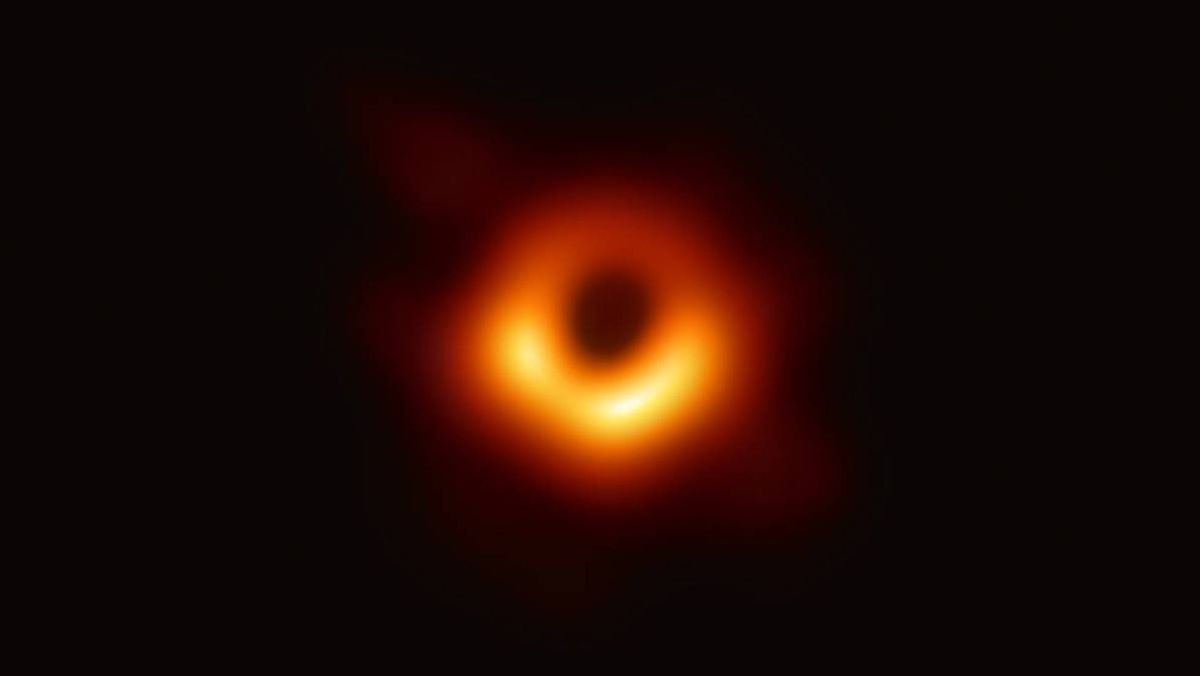There are three different types of black holes: stellar, supermassive, and intermediate-mass.
Stellar black holes are the smallest and come from the death of a star, although only from stars that are very massive.
Our Sun, for example, does not hold this future.
We can find these types of holes relatively close to Earth, although the term
close,
when we talk about distances in the universe, is not like when we talk about scales like on Earth.
While the intermediate and supermassive ones are very far away, in the centers of the galaxies, the distance range in the case of the stellar ones is that of our own galaxy.
More information
Can the black hole at its center destroy our galaxy?
To give you an idea of what the different types of black holes are like, the stellar ones have tens of solar masses, while the intermediate ones contain from hundreds to thousands of solar masses, and the supermassive ones, several million, can reach even more. one hundred billion.
These objects are found at the centers, or near the centers, of almost all galaxies, regardless of what type of galaxy they are.
We cannot see a black hole, we can only detect it with indirect methods through its interaction with the surrounding space and matter.
To know where the black holes are, they must be detected and there are several techniques for this.
We look for some phenomena that we know cause this type of object, such as a high-energy jet, and when we locate this type of phenomenon, we study whether it could be due to a black hole.
The first thing that is done is to look for places and objects in which this behavior exists.
And then try to make a measurement on them.
A couple of years ago what was assumed to be a stellar black hole was found and was named
Unicorn
because it was very, very close to us.
It was the closest to date, although it is more than a thousand light years away.
That is, it could not affect us.
It must be clear that a black hole is not a super magnet that attracts everything.
If you are not within what is called its radius of influence (the apparent radius of the event horizon), it would not affect anything at all.
So we would be safe from the
Unicorn
, although in the end it all turned out to be an optical illusion.
The closest of those confirmed is almost 5,000 light years away.
That is, in our solar neighborhood there are none.
But in the Milky Way, as in the rest of the galaxies, there are many such stellar black holes, probably millions.
As far as supermassives are concerned, there is usually only one per galaxy and they are usually in the center.
They are the result of an evolutionary theory in which the black hole and the galaxy depend on each other and grow together, the larger the galaxy, the larger its black hole.
Of these, the closest to us is the one at the center of our own Milky Way galaxy, Sagittarius A*, some 50,000 light-years away.
As far as the intermediate masses are concerned, they have not been measured yet, there are only a few candidates (some in our galaxy), so at the moment they are a great enigma.
At the beginning of time, primordial galaxies were much smaller and less massive than those we see today, so they should contain intermediate black holes following the relationship mentioned above.
Over time, these small galaxies interact, collide with each other, forming larger ones, and the same thing happens with the black holes they contain, so the formation of supermassive black holes occurs.
It is very important that we find these types of black holes, as they are the missing link between stellar and supermassive black holes.
Anna Ferré-Mateu
is a doctor in Astrophysics and a researcher at the Institute of Astrophysics of the Canary Islands (IAC)
Question sent via email by
Luis Fernando Pérez Sicacha
Coordination and writing:
Victoria Toro
we answer
is a weekly scientific consultancy, sponsored by the
Dr. Antoni Esteve Foundation
and the
L'Oréal-Unesco 'For Women in Science' programme
, which answers readers' questions about science and technology.
They are scientists and technologists, members of
AMIT (Association of Women Researchers and Technologists)
, who answer these questions.
Send your questions to us at
nosotrasrespondemos@gmail.com
or via Twitter #nosotrasrespondemos.
You can follow
MATERIA on
,
and
, or sign up here to receive
our weekly newsletter
.

